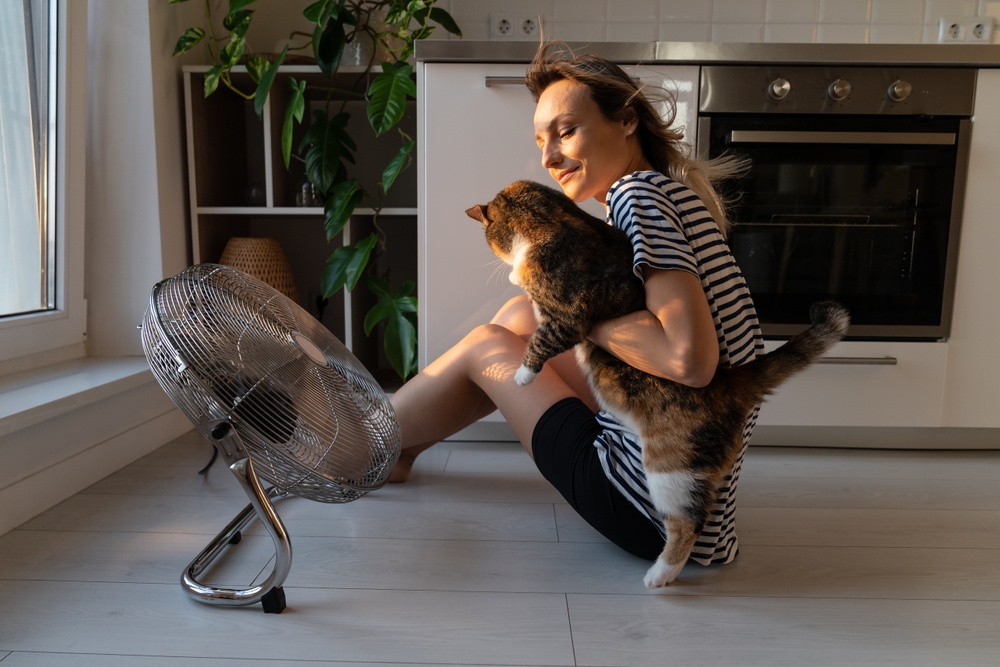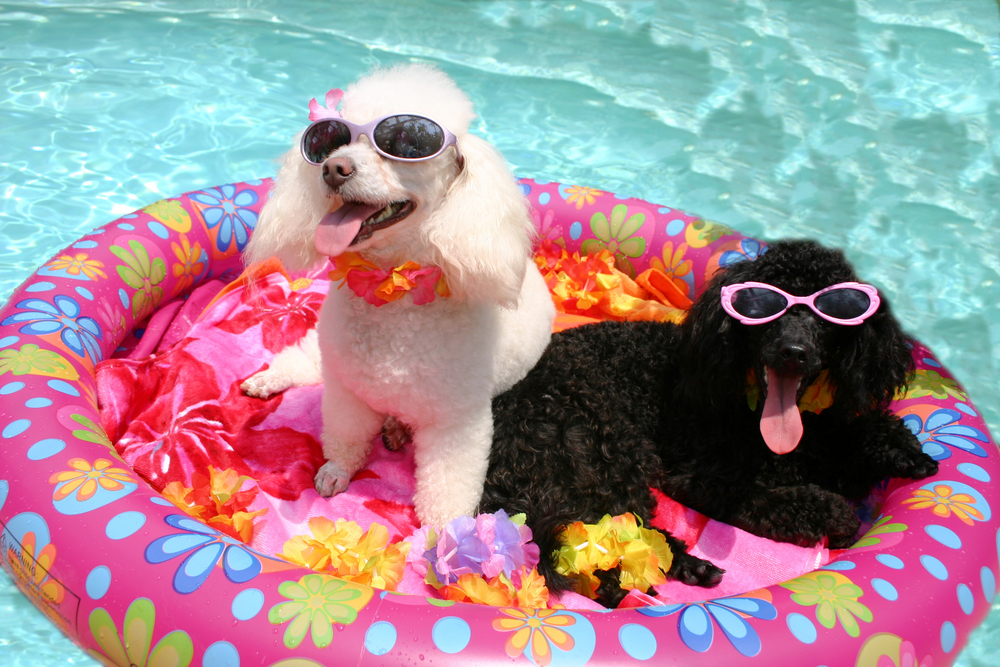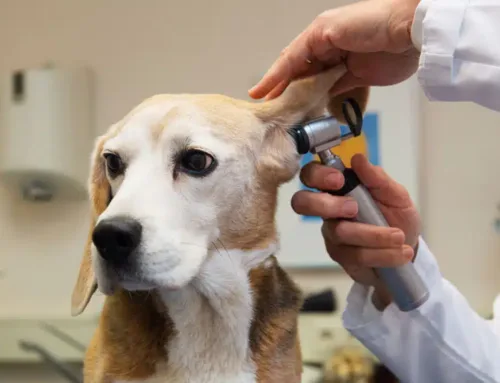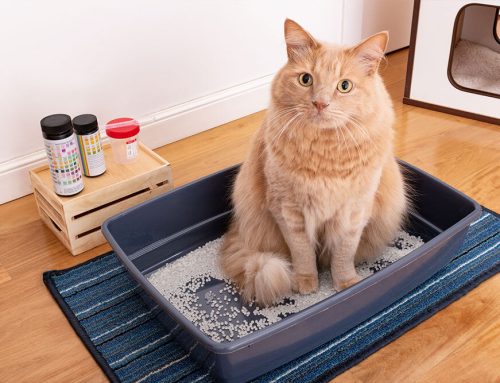Long, sunny summer days make for great outdoor adventures and family memories, but the heat can be dangerous for pets. High temperatures that people find comfortable often are intolerable for pets, who cannot sweat to cool down. Panting helps dogs—but not cats—dissipate heat, but you must be prepared with more strategies to prevent their body temperature from rising too high.
Fairfax Veterinary Clinic knows that heatstroke can happen quickly and is often deadly for pets, whose internal organs and body cells cannot function outside their normal temperature range. Here are do’s and don’ts that will help prevent heat-related illness in pets.
Do: Learn the signs of heat stress and heatstroke in pets
Pets heat up faster than people, and heatstroke can develop quickly. When you know the signs, you can act quickly to help your pet cool down. During heat stress or heat exhaustion, your pet may become dehydrated or weak, but their internal temperature will remain normal. They may pant, vomit, have diarrhea, or show muscle spasms. If pets stay in the heat, their body temperature may elevate, and they may develop heatstroke. Heatstroke signs may include:
- Muscle stiffness or incoordination
- Mental status changes
- Seizures
- Excessive panting
- Reddened gums
- Weakness or collapse
Do: Understand your pet’s heatstroke risk factors
All pets are at risk for heatstroke, which is more likely to occur with high temperatures, and high humidity—which prevents evaporative cooling—and sunny conditions. Some pets are less efficient at cooling their bodies and more likely to develop a heat-related illness, including:
- Overweight pets
- Pets with heart or endocrine diseases
- Short-nosed (i.e., brachycephalic) pets
- Young or old pets
- Pets with breathing disorders (i.e., laryngeal paralysis, tracheal collapse, asthma, chronic bronchitis)
Do: Allow pets time to acclimate to warmer weather
Pets can acclimate to hot weather when temperatures rise gradually, but will struggle if they move to a hotter climate or the temperature rises suddenly during a heat wave. Gradually increase your pet’s time outdoors in the heat over several weeks to help their bodies adapt.
Do: Provide pets with cool water, shade, and frequent exercise breaks
Most pets need outdoor time, and keeping them inside all summer may not be a viable option. To protect your pet from heat, take a few extra precautions:
- Provide cool water at all times.
- Don’t forget water and a bowl when you walk or hike.
- Take frequent exercise breaks in the shade or exercise indoors in sunny conditions.
- Always monitor your pet closely for overheating signs.
Don’t: Leave pets in hot cars
Temperatures inside a car can rise quickly because the car acts like an oven, whether or not you leave the windows cracked. Pets will overheat quickly and risk dying in a hot car with temperatures that easily soar above 100 degrees. Leave your pet at home or leave the air conditioner running, if you must take your pet with you.
Don’t: Leave pets outside unattended
Many pets enjoy playing outside in a fenced yard, but avoid leaving them alone for too long in the summer. Check on them frequently to ensure they are acting normally and are not developing heat stress signs, and take them indoors frequently for breaks. Don’t forget to provide water and shade, too.
Don’t: Exercise during the hottest parts of the day
Staying inside and avoiding exercise during peak sun hours will significantly reduce your pet’s heatstroke risk. Aim for the cooler early morning hours, or head out around dusk when the sun sets, especially if your pet is high-risk. Swimming is a good alternative to walking or hiking if your dog loves water, but ensure you supervise them closely.
Do: Cool down your heat-stressed pet and get veterinary care

If you believe your pet has heatstroke, cool them by wetting down their fur and placing them in front of a moving air source, ideally while you transport them to a veterinary hospital. Avoid ice or ice-cold water, which will constrict your pet’s blood vessels and slow down the cooling process. Blast the air conditioning in the car and head to our clinic or your nearest veterinary emergency center. Call ahead to ensure your veterinary team is prepared for your arrival.
Older or high-risk pets may benefit from a pre-summer checkup to ensure they are healthy enough to withstand outdoor exercise and to discuss other summer safety risks, such as parasites. Contact the Fairfax Veterinary Clinic team to schedule your pet’s next visit or with your questions regarding heat safety.








Leave A Comment